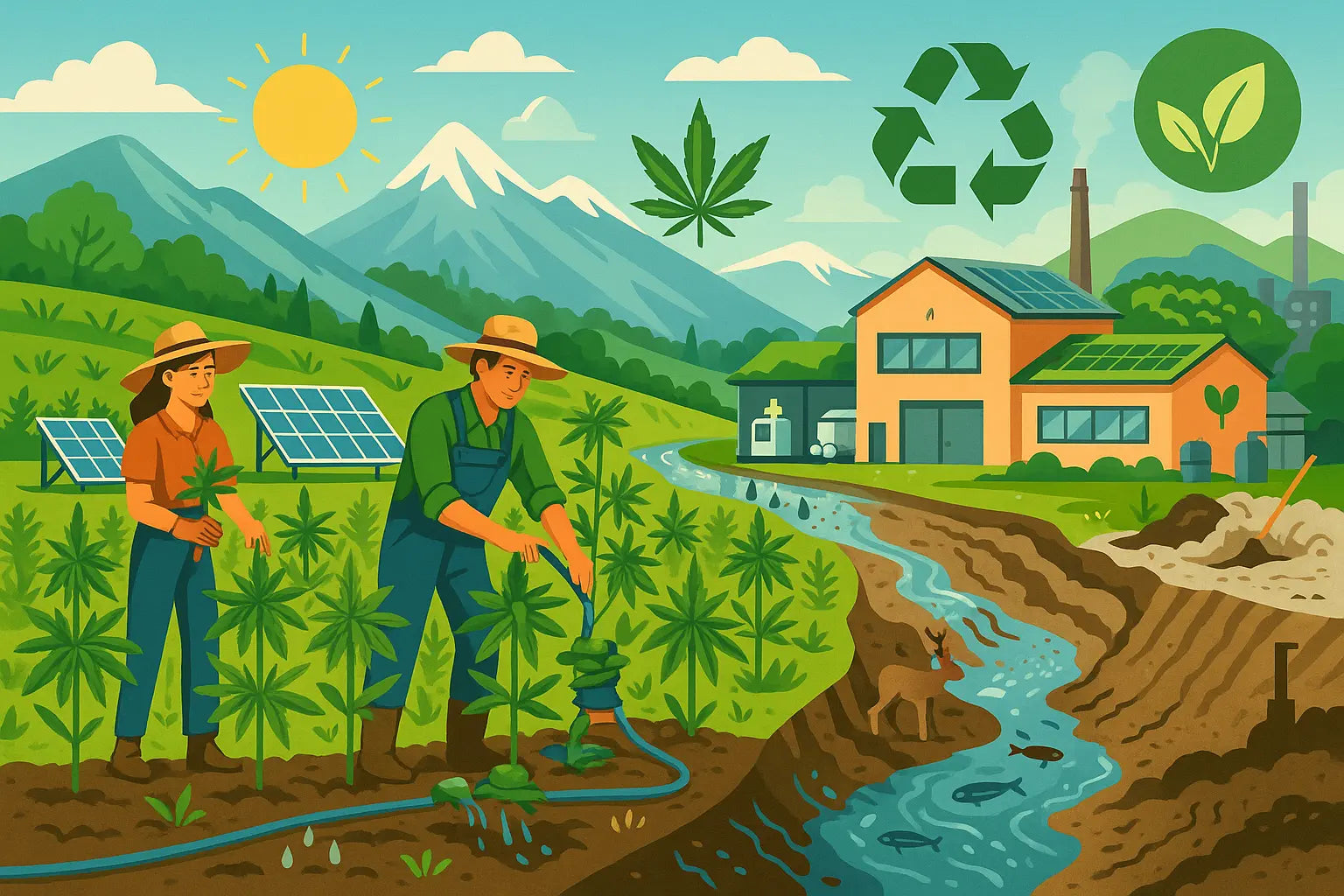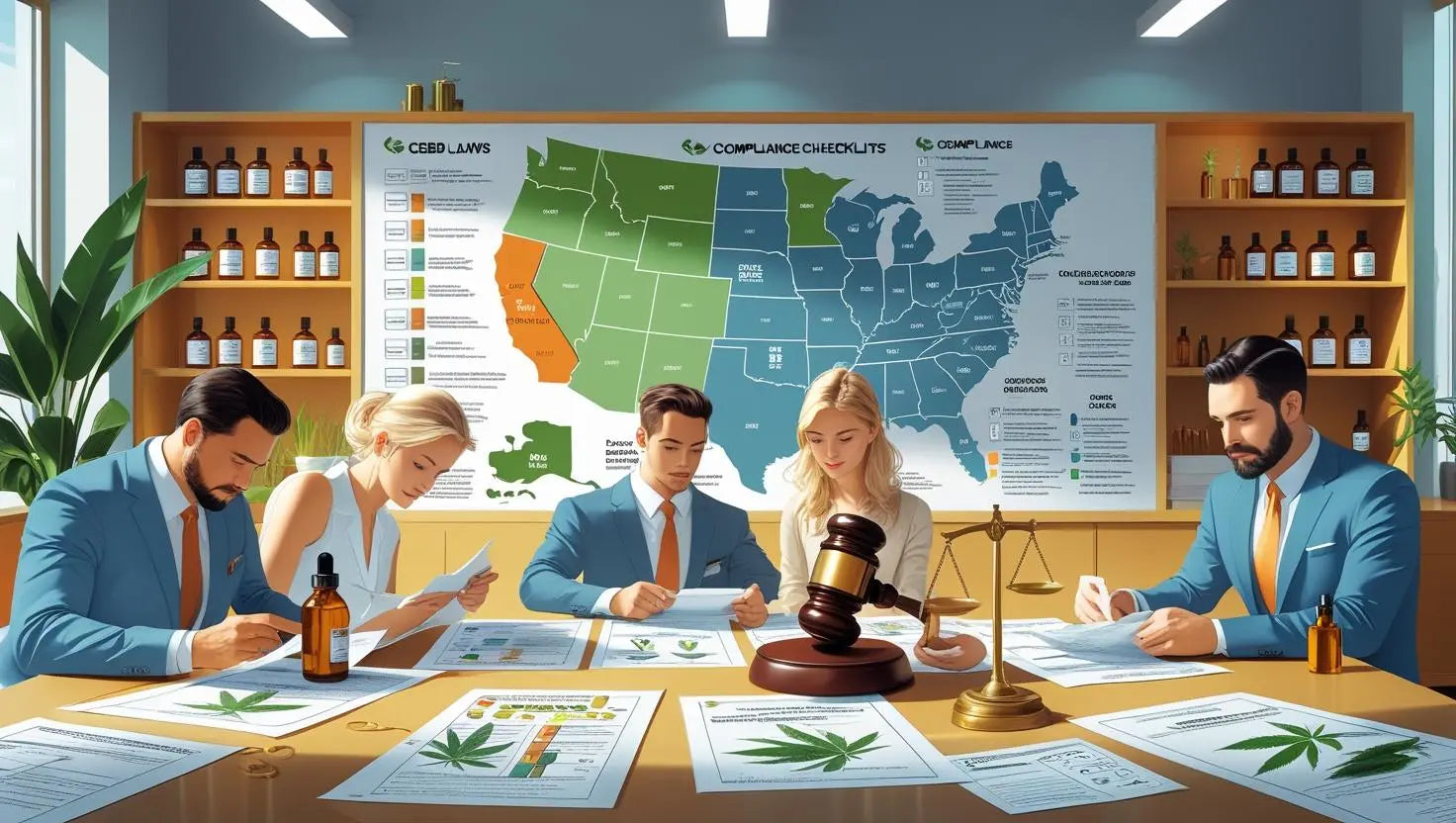The Environmental Impact of CBD Production

The rise in popularity of CBD has been remarkable. From wellness advocates to athletes, many people seek out hemp products for their potential health benefits. As demand grows, so does the scale of production for CBD hemp flower and related items.
But how does this booming industry affect the environment?
Understanding the environmental impact of CBD production is crucial for both consumers and producers who value sustainability alongside a commitment to quality.
Why Environmental Impact Matters in CBD Production
CBD products come from the hemp plant, a type of cannabis bred for high CBD and low THC. Hemp is often praised for being eco-friendly. It grows fast and needs fewer chemicals than many other crops. But growing hemp and making premium CBD flower still impacts the environment—especially at large scales.
High quality CBD depends on healthy, chemical-free plants. If farming practices harm the planet, it affects the benefits of CBD and the long-term future of the industry.
Today, consumers care more about where their CBD comes from. They expect brands to be open about growing and production methods. This is part of good customer service.
Brands that offer trusted strains and premium CBD flower now focus on sustainability too. It’s not just about profits. It’s about delivering clean, safe products that help people and protect the planet.
The Agricultural Footprint of Growing Hemp
Hemp grows quickly and can thrive in many climates. This versatility makes it attractive to farmers. But cultivation methods greatly affect its environmental impact.
Quality hemp farming requires:
-
Water use: Hemp needs less water than many traditional crops like cotton, but water management remains essential. Over-irrigation in certain regions can strain local water supplies.
-
Pesticides and fertilizers: Some farmers use chemical inputs to maximize yields. These can contaminate soil and water, harming local ecosystems. Sustainable growers avoid synthetic pesticides, relying instead on organic or integrated pest management practices.
-
Land use: Hemp can improve soil health through crop rotation and carbon sequestration. But large monoculture farms risk reducing biodiversity.
Brands providing CBD flower offers from farms that follow organic or regenerative agriculture methods minimize negative impacts and promote healthy soil and ecosystems.
Energy Consumption in Indoor Cultivation
Many CBD flowers in the UK come from indoor or greenhouse grows. These controlled environments enable year-round cultivation and consistent cannabinoid content.
However, indoor cultivation can be energy-intensive. Grow lights, HVAC systems, and ventilation consume significant electricity—sometimes sourced from fossil fuels.
Some producers offset this by using:
-
Energy-efficient LED lights
-
Solar or renewable energy
-
Smart climate control technology
Reducing the carbon footprint of indoor grows is a key challenge for the industry’s sustainable future.
Extraction and Processing: Environmental Considerations
Extracting CBD from cbd hemp flower requires technology and energy. Different extraction methods have varying environmental impacts.
-
CO₂ extraction is the most popular method among producers committed to quality. It uses pressurized carbon dioxide, which can be recycled within the system, minimizing waste and avoiding harmful solvents.
-
Solvent-based extraction with butane or ethanol can generate hazardous waste if not handled responsibly.
Brands known for high quality CBD products prioritize clean extraction methods that reduce pollution and conserve resources.
Packaging and Waste Management
Packaging plays a critical role in the environmental footprint of hemp products.
Many companies now adopt:
-
Recyclable or biodegradable packaging materials
-
Minimalist designs to reduce plastic waste
-
Refillable containers to encourage reuse
Disposing of waste responsibly, from plant scraps to leftover solvents, also matters. Companies with strong commitment to quality implement waste reduction and recycling programs.

The Role of Local Sourcing and Transparent Shopping Experience
Supporting local growers and makers helps the planet. It cuts down on transport emissions. For example, buying CBD flowers in the UK—grown and processed locally—means fewer carbon miles.
Many brands now highlight where their products come from. They show how the hemp plant is farmed and handled. This makes the shopping process more transparent and quick and easy.
When you know the source, you can choose the perfect CBD for your needs. Whether it's for making CBD flower tea, managing daily life stress, or enjoying the anti-inflammatory properties, you're more informed.
Buying from eco-conscious sellers doesn't mean giving up variety. These brands still offer unique strains, high strain types, and ways to consume CBD flowers that fit your lifestyle.
How Consumers Can Support Sustainable CBD
As a shopper, you have power to influence the industry toward greener practices.
-
Look for brands that disclose their farming, extraction, and packaging methods.
-
Choose cbd hemp flower grown organically or with sustainable certifications.
-
Favor products made with renewable energy and clean extraction.
-
Ask questions during your shopping experience about environmental policies.
-
Consider reusable or recyclable packaging when available.
-
Support companies that invest in carbon offset or environmental projects.
Industry Trends Toward Sustainability
Many producers are stepping up. Innovations include:
-
Regenerative farming practices that restore soil health and biodiversity
-
Advanced energy-saving technology in indoor grows
-
Zero-waste extraction methods
-
Sustainable packaging breakthroughs
-
Increased transparency with full third-party lab testing and environmental reporting
The future of CBD flower offers and related products depends heavily on balancing high concentrations of cannabinoids with ecological responsibility.
Final Thoughts: A Greener Path Forward for CBD
The environmental impact of CBD production is complex. But it’s also manageable.
With careful choices—from seed to shelf—brands and buyers can protect the planet. You can still enjoy the benefits of CBD and choose premium CBD flower that’s responsibly made.
It starts with sustainable farming. Then comes clean extraction. After that, it’s about eco-friendly packaging and honest customer service.
Every small step helps. Whether you prefer to consume CBD flowers, make CBD flower tea, or explore different strain types, your choices matter.
Even how you shop matters. Go for quick and easy access with clear labeling. Choose brands that are offering unique strains and strains offering natural anti-inflammatory properties.
CBD is now part of daily life for many. But good CBD should do more than help you—it should help the planet too.
Next time you browse or smoke or vape, think beyond purity. Think about the hemp plant itself.
Choosing the perfect CBD means picking products that are kind to your body and kind to the Earth.
Together, we can build a greener future for CBD—and for everyone.



